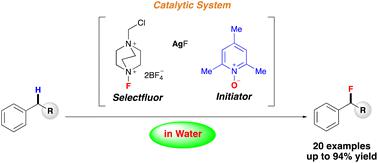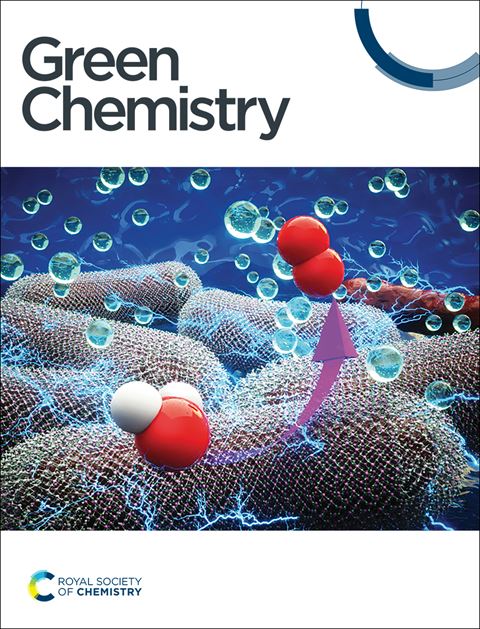C–H fluorination promoted by pyridine N-oxyl radicals†
IF 9.2
1区 化学
Q1 CHEMISTRY, MULTIDISCIPLINARY
引用次数: 0
Abstract
Inspired by C–H hydroxylation by cytochrome P450 enzymes (P450s), we report here a method for preparing organofluorides through a single-electron transfer (SET) process, in which the pyridine N-oxyl radical greatly promotes the C–H fluorination. This reaction can be carried out in pure water at room temperature and accommodates a wide range of substrates, including bioactive molecules, with good yields. Mechanistic investigations indicate that reactions advance through radical intermediates.


吡啶 N-氧自由基促进的 C-H 氟化作用
受细胞色素 P450 酶(P450)的 C-H 羟基化作用的启发,我们在此报告了一种通过单电子转移(SET)过程制备有机氟化物的方法,其中吡啶 N-氧自由基极大地促进了 C-H 氟化作用。该反应可在室温下的纯水中进行,适用于包括生物活性分子在内的多种底物,而且产率高。机理研究表明,反应是通过自由基中间体进行的。
本文章由计算机程序翻译,如有差异,请以英文原文为准。
求助全文
约1分钟内获得全文
求助全文
来源期刊

Green Chemistry
化学-化学综合
CiteScore
16.10
自引率
7.10%
发文量
677
审稿时长
1.4 months
期刊介绍:
Green Chemistry is a journal that provides a unique forum for the publication of innovative research on the development of alternative green and sustainable technologies. The scope of Green Chemistry is based on the definition proposed by Anastas and Warner (Green Chemistry: Theory and Practice, P T Anastas and J C Warner, Oxford University Press, Oxford, 1998), which defines green chemistry as the utilisation of a set of principles that reduces or eliminates the use or generation of hazardous substances in the design, manufacture and application of chemical products. Green Chemistry aims to reduce the environmental impact of the chemical enterprise by developing a technology base that is inherently non-toxic to living things and the environment. The journal welcomes submissions on all aspects of research relating to this endeavor and publishes original and significant cutting-edge research that is likely to be of wide general appeal. For a work to be published, it must present a significant advance in green chemistry, including a comparison with existing methods and a demonstration of advantages over those methods.
 求助内容:
求助内容: 应助结果提醒方式:
应助结果提醒方式:


